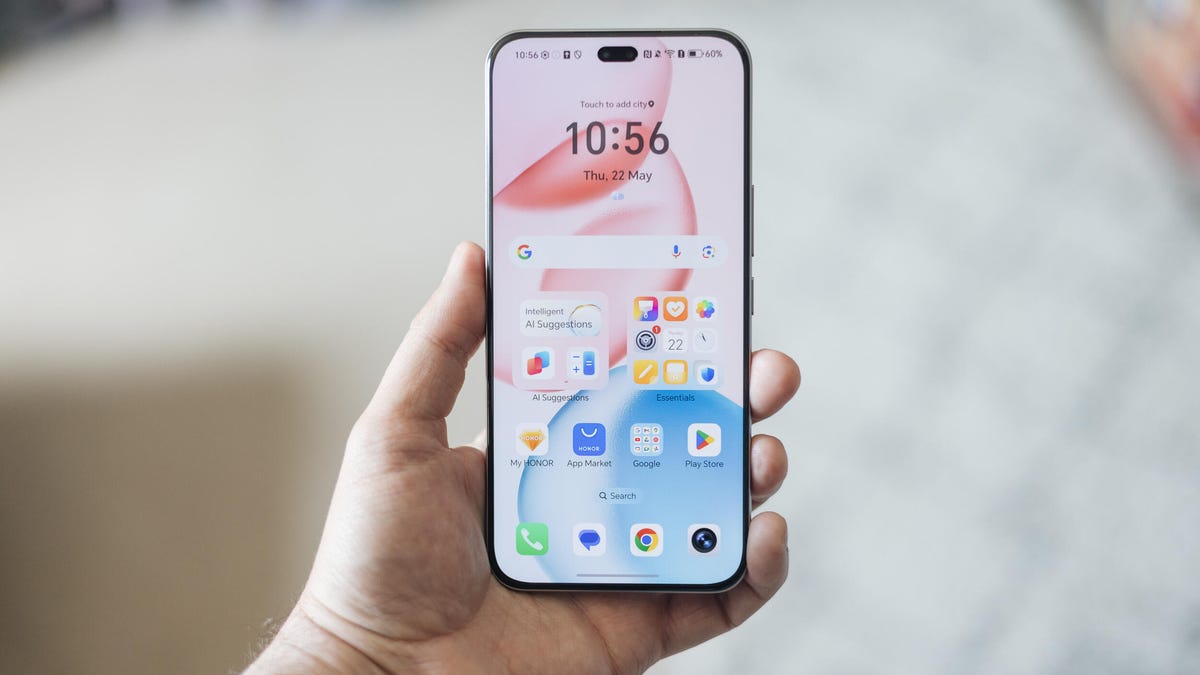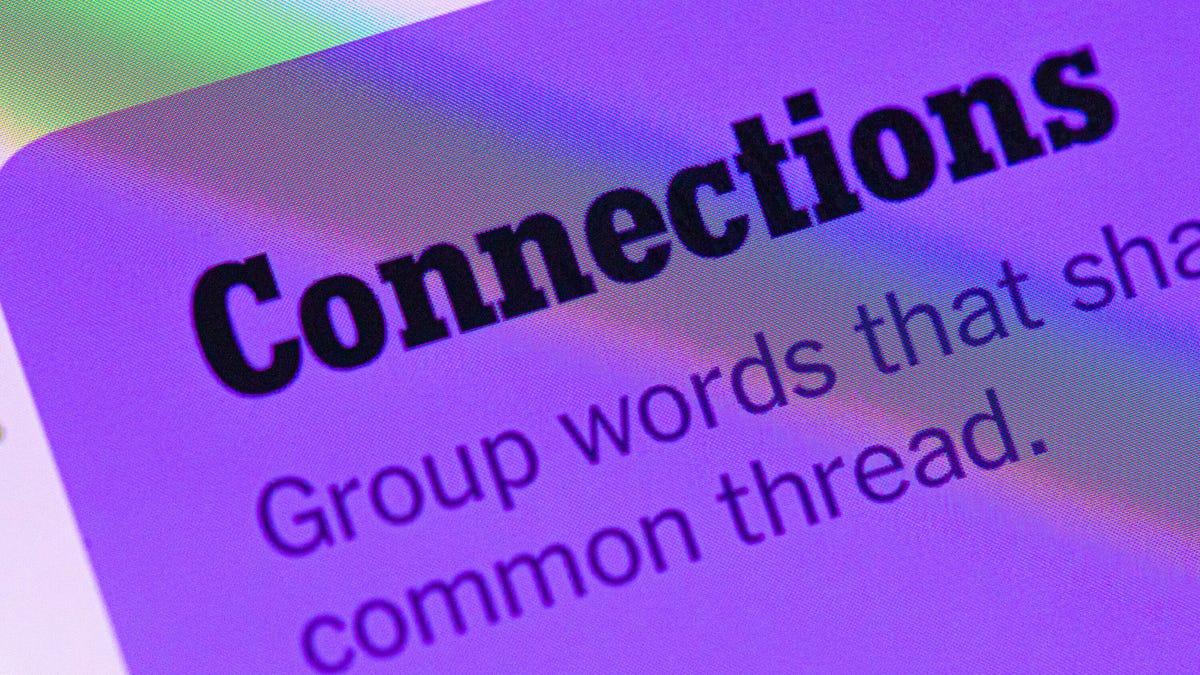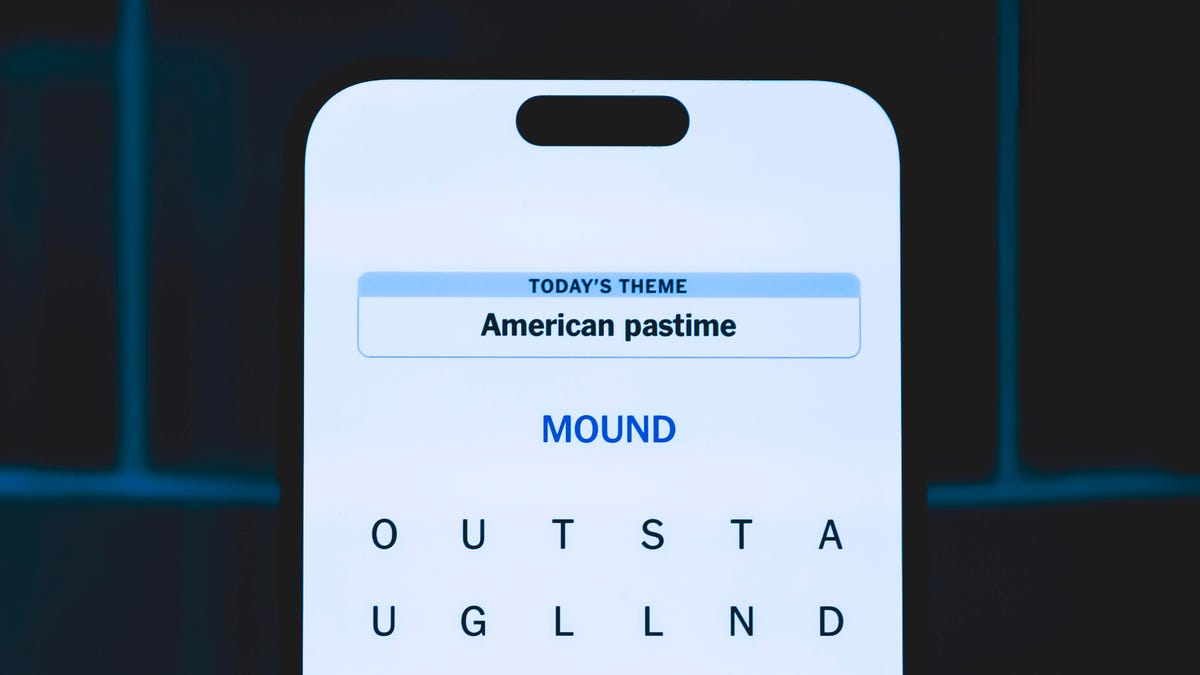Technologies
I Tested the Honor 400 Pro Phone and This Feature Blew My Mind
Review: The phone is packed with great tech but it’s the AI skills that really surprised me

The Honor 400 Pro phone stood out to me for one big reason during my testing time. It has an AI-powered tool that turns still images into moving video clips. The AI created videos felt at times like magic and took me on an emotional journey that I didn’t expect. But this phone has plenty going for it beyond its AI skills.
Its screen is bright and vibrant, it’s packed with power and at £700 in the UK, it’s relatively affordable and offers some serious competition to both Samsung’s $650 Galaxy S24 FE and arguably even Google’s $1,000 Pixel 9 Pro. The downside for many of you is that the Honor 400 Pro won’t be officially on sale in the US. And that’s a pity because at a time when nearly every phone release comes with AI features (most of which feel like gimmicks), Honor proves that it’s possible for phone AI to really capture your attention. The 400 Pro’s £700 price converts to $938.
There’s also the base Honor 400, which uses a lower-end processor, has a smaller display but still packs the same AI skills. It’ll cost only £400 in the UK, or $537, converted.
I’ve been testing the phone for the past week so here’s what’s good — and not so good — about the Honor 400 Pro.
A vibrant screen, plenty of power
The 400 Pro has a 6.7-inch screen that offers tons of room to do your favorite mobile games or YouTube videos justice. It’s bright enough to counter midday sun and its colors are vibrant. It’s got a maximum 120Hz refresh rate, which makes scrolling around look nice and smooth.
The phone runs on a Qualcomm Snapdragon 8 Gen 3 processor that was a mainstay on most 2024 flagship Android phones and which put in some decent scores on our benchmark tests, considering the price. Its scores are in line with last year’s Galaxy S24 and Xiaomi 14 Ultra, which is no surprise as all three phones use the same chip. It’s got more than enough power to handle all of your everyday needs while tackling demanding games like Genshin Impact and PUBG at max settings without breaking a sweat.
Navigating around the Android 15 interface is a breeze. Honor’s skin of the UI is pretty standard, though I’m irked by the number of preinstalled apps the phone comes with. Temu, TikTok, LinkedIn, Booking.com, Amazon and something called ReelShort are all on the phone — along with various others — as soon as you turn it on making it feel quite cluttered from the off. I get that Honor probably makes a healthy bit of cash from these companies by forcing their apps on customers by default, but I’d like to see the phone be even cheaper given that it’s essentially ad-supported. You can uninstall these apps and I advise you to have an immediate clear-out once you get it out of the box.
Honor says the phone will receive six years of software and security support, which is quite good, though it’s a year behind the seven years of security support offered by both Samsung and Google. I’d like to see Honor (and other mobile companies) continue to battle to see who can support their phones for longer — it’s better for your wallet and it’s better for the planet.
AI. Lots of AI
No phone worth its salt in 2025 would launch without some form of AI, and the Honor 400 Pro is no exception. You’ll find a variety of the usual AI tools that range from a speech-to-text tool that transcribes dialogue in real time and a real-time language translation tool to a function that can rephrase, expand or summarise blocks of text.
Most of these are things you’ll find on most AI-enabled phones these days. They work about as well as the ones I’ve tried elsewhere. Google’s Gemini Advanced is also built in, another standard part of the Android experience.
The one feature that took me by surprise though was the image to video tool which creates a 5-second video out of a photo you provide. It’s simple: Open the Image to Video tool in the gallery, choose your source image from your camera roll and hit go. It takes around a minute but then you’ll be presented with an animated version of your still photo.
It uses Google’s VEO-2 AI model, and it seems essentially random in how it decides to bring your image to life as there are no options to provide prompts in what you want to see. Some results are quite bland while others have a lot more going on. The results can be hit and miss in their quality but it’s fun to play around with, though it’s arguably pointless beyond the sheer novelty of it. That said, I was conflicted when I fed it an image of my dad who died when I was a young child.
Right now the tool is available as part of a «free trial» although Honor has yet to confirm how long this trial lasts or how much it will eventually cost. AI is clearly a big part of the phone and while you can use it without using any of the AI tools, it feels like you’d be missing out on a big part of the equation if you chose to.
Hit and miss cameras, middling battery
On the back is a triple camera setup consisting of a 200-megapixel main camera (yes, I did mean to put two zeroes there), a 50-megapixel telephoto camera and a 12-megapixel ultrawide camera. Shots from all three cameras can look solid, with decent overall exposure (if sometimes a little on the bright side for my taste) and plenty of detail. I say «can» as while I have taken plenty of good images with the phone, I’ve also taken various ones that have disappointed me.
The 6x telephoto camera seems to struggle with exposure at times, with blown-out highlights visible in multiple test images I took. It doesn’t happen all the time though and there have been various occasions in my testing when its results look great. I can best describe it as «hit and miss.»
The cameras certainly aren’t the best around — you’ll need to splash more cash for the S25 Ultra or the iPhone 16 Pro if you want that — but they’re good enough for those of you looking for quick snaps on your travels to share with family and friends over WhatsApp or Instagram.
Inside the phone is a 5,300-mAh battery which should see you through most of a day of mixed use. It didn’t do great on our demanding battery drain test, but I’ve certainly seen worse. It does support 100W wired charging though so getting the juice back in is a speedy business.
Honor 400 Pro: Is it worth buying?
The phone’s vibrant display, powerful processor and solid camera setup make it a decent overall option if you’re looking for a phone that’s more affordable than today’s flagships. The AI skills are the cherry on the top, especially the image to video tool which I found genuinely fascinating to use. Will the novelty wear off? Yes, absolutely, but it’s certainly fun to play with for a while.
Technologies
Meta Wins Antitrust Case, Won’t Have to Give Up WhatsApp or Instagram
The FTC claimed Meta held an illegal monopoly in social networking.

Meta has won its antitrust case against the Federal Trade Commission. The FTC said Meta held an illegal monopoly in social networking — centering on the company’s acquisitions of WhatsApp and Instagram.
Judge James Boasberg of the US District Court for the District of Columbia released a memorandum opinion on Tuesday, stating that the FTC failed to prove its claims in court.
Don’t miss any of our unbiased tech content and lab-based reviews. Add CNET as a preferred Google source.
«Whether or not Meta enjoyed monopoly power in the past,» Boasberg wrote in the filing, «the agency must show that it continues to hold such power now.»
Boasberg initially dismissed the FTC’s complaint in 2021, stating that the agency lacked sufficient evidence that Meta holds «market power» in the social networking industry. At the time, the FTC argued that «Facebook’s course of conduct has eliminated nascent rivals,» preventing «the benefits of competition, including increased choice, quality and innovation» from developing for US social media users.
After the FTC amended its filing with information about Meta’s user numbers and acquisitions of the WhatsApp and Instagram applications, Boasberg allowed the case to proceed in 2022.
The trial began in April, and multiple high-ranking current and former Meta executives testified before the court — chief among them, Meta CEO Mark Zuckerberg. Much of Zuckerberg’s testimony focused on refuting the FTC’s primary claim, which hinged on an argument Zuckerberg made in 2008: «It is better to buy than compete.»
Meta’s win means the company will be able to continue operating WhatsApp and Instagram unimpeded. Had the FTC proven its claims in court, Meta likely would have had to break these applications off into their own separate social networking companies.
Meta released a public statement on Tuesday, stating that the decision «recognizes that Meta faces fierce competition» in the social networking industry.
«Our products are beneficial for people and businesses and exemplify American innovation and economic growth,» the statement read. «We look forward to continuing to partner with the Administration and to invest in America.»
FTC Director of Public Affairs Joe Simonson said the agency is «deeply disappointed» with the outcome of the case.
«The deck was always stacked against us with Judge Boasberg, who is currently facing articles of impeachment,» he said. «We are reviewing all our options.»
Republican lawmakers have tried multiple times to impeach Boasberg, a frequent political target of the Trump administration.
While Meta’s antitrust case may be over, it didn’t take place in a vacuum. Google recently settled a case with the FTC that resulted in the search giant being told it must share limited search and user-interaction data with «qualified competitors.» Another case targeting Google’s AI overview feature is ongoing in the European Union, as a group of publishers claims the company is causing harm due to a loss of traffic, readership, and revenue.
Technologies
Today’s NYT Connections Hints, Answers and Help for Nov. 19, #892
Here are some hints and the answers for the NYT Connections puzzle for Nov. 19, #892

Looking for the most recent Connections answers? Click here for today’s Connections hints, as well as our daily answers and hints for The New York Times Mini Crossword, Wordle, Connections: Sports Edition and Strands puzzles.
Today’s NYT Connections puzzle has one of those classic purple categories, where four words have hidden connected words inside them. If you need help sorting them into groups, you’re in the right place. Read on for clues and today’s Connections answers.
The Times now has a Connections Bot, like the one for Wordle. Go there after you play to receive a numeric score and to have the program analyze your answers. Players who are registered with the Times Games section can now nerd out by following their progress, including the number of puzzles completed, win rate, number of times they nabbed a perfect score and their win streak.
Read more: Hints, Tips and Strategies to Help You Win at NYT Connections Every Time
Hints for today’s Connections groups
Here are four hints for the groupings in today’s Connections puzzle, ranked from the easiest yellow group to the tough (and sometimes bizarre) purple group.
Yellow group hint: Not petite.
Green group hint: You learn this in driver’s ed.
Blue group hint: Nevermore!
Purple group hint: Look for hidden words having to do with the body.
Answers for today’s Connections groups
Yellow group: Stocky.
Green group: Steer.
Blue group: Second words in Poe stories, after «The.»
Purple group: Organ plus a letter.
Read more: Wordle Cheat Sheet: Here Are the Most Popular Letters Used in English Words
What are today’s Connections answers?
The yellow words in today’s Connections
The theme is stocky. The four answers are husky, solid, squat and thick.
The green words in today’s Connections
The theme is steer. The four answers are direct, guide, lead and shepherd.
The blue words in today’s Connections
The theme is second words in Poe stories, after «The.» The four answers are cask, fall, masque and pit.
The purple words in today’s Connections
The theme is organ plus a letter. The four answers are colony (colon), hearth (heart), lunge (lung) and skink (skin).
Technologies
Today’s NYT Strands Hints, Answers and Help for Nov. 19 #626
Here are hints and answers for the NYT Strands puzzle for Nov. 19, No. 626.

Looking for the most recent Strands answer? Click here for our daily Strands hints, as well as our daily answers and hints for The New York Times Mini Crossword, Wordle, Connections and Connections: Sports Edition puzzles.
Today’s NYT Strands puzzle is easier than most days. It helps if you know world religions. Some of the answers are difficult to unscramble, so if you need hints and answers, read on.
I delve into the rules for Strands in this story.
If you’re looking for today’s Wordle, Connections and Mini Crossword answers, you can visit CNET’s NYT puzzle hints page.
Read more: NYT Connections Turns 1: These Are the 5 Toughest Puzzles So Far
Hint for today’s Strands puzzle
Today’s Strands theme is: Divinely inspired.
If that doesn’t help you, here’s a clue: Different beliefs.
Clue words to unlock in-game hints
Your goal is to find hidden words that fit the puzzle’s theme. If you’re stuck, find any words you can. Every time you find three words of four letters or more, Strands will reveal one of the theme words. These are the words I used to get those hints, but any words of four or more letters that you find will work:
- BRIM, BEAR, PEST, RIGS, ROPE, GRIP, GRIPE, GOES, GUILE, MAIM, GRAD
Answers for today’s Strands puzzle
These are the answers that tie into the theme. The goal of the puzzle is to find them all, including the spangram, a theme word that reaches from one side of the puzzle to the other. When you have all of them (I originally thought there were always eight but learned that the number can vary), every letter on the board will be used. Here are the nonspangram answers:
- IMAM, RABBI, PRIEST, MONK, BUDDHA, PROPHET
Today’s Strands spangram
Today’s Strands spangram is RELIGIOUSFIGURES. To find it, start with the R that’s three letters to the right on the bottom row, and wind up.
-

 Technologies3 года ago
Technologies3 года agoTech Companies Need to Be Held Accountable for Security, Experts Say
-

 Technologies3 года ago
Technologies3 года agoBest Handheld Game Console in 2023
-

 Technologies3 года ago
Technologies3 года agoTighten Up Your VR Game With the Best Head Straps for Quest 2
-

 Technologies4 года ago
Technologies4 года agoBlack Friday 2021: The best deals on TVs, headphones, kitchenware, and more
-

 Technologies4 года ago
Technologies4 года agoVerum, Wickr and Threema: next generation secured messengers
-

 Technologies4 года ago
Technologies4 года agoGoogle to require vaccinations as Silicon Valley rethinks return-to-office policies
-

 Technologies4 года ago
Technologies4 года agoOlivia Harlan Dekker for Verum Messenger
-

 Technologies4 года ago
Technologies4 года agoiPhone 13 event: How to watch Apple’s big announcement tomorrow
